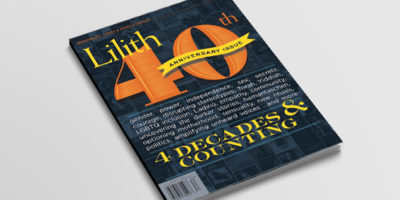Yellow Rose of Texas
We are in Casco Antiguo, the old, colonial quarter of Panama City where buildings date back as early as the 1600s. The D.J. at the end of the room has been instructed to open with “The Yellow Rose of Texas” and to play my Aunt Adelaide’s old favorites. The venue for the party: a bank built in 1904 that had been involved in the financing of the Panama Canal. Family have helped Adelaide with the preparations. Her sister-in- law, Connie, 92, brought Adelaide weeks before to taste the food and approve the flowers.
When she called me in New York several months ago, Tía Adelaide
said,“I invited all the people I care about. Will you come?” She’d insisted on a party on her 99th the year before, “in case I don’t make it to three digits.” I’d flown in for that, too. It’s not every day that a family member becomes a centenarian.
Since Adelaide arrived in Panama in 1935, the Jewish community has
changed dramatically.Our group—Kol Shearith Israel—is the smallest, descendants of Spanish-Portuguese Jews who arrived in Panama in the 1850s. There are now three Jewish congregations and six synagogues with a total of 15,000 members; the majority are families of Sephardic Jews who emigrated from Arab countries after WWII, and from Israel. In recent years there have been waves of immigrants from Latin American nations in periods of trouble: Colombia, Argentina, and now Venezuela.
My cousin David reminds us that this is a gathering of the tribe. We are four generations of family celebrating a shared history. More than 80 years of memories for those who knew Adelaide when she first traveled to Panama in a banana boat at 18. When she arrived from Texas, she found a small community of about 500 people, our Jewish identity in mostly Catholic Panama held together by matriarchs and by tíos who led prayers in rented halls until a synagogue was built in 1936. Our families, who had begun settling in Panama in the 1890s, were influenced by a chaplain assigned to the U.S. enlisted men in the Canal Zone who steered us towards a Reform service and away from the remnants of a Sephardic Orthodox tradition.
Tía Adelaide was different from my other tía, who were related to me on all sides. Aunt by marriage—tía política—she had wedded my father’s best friend and third cousin, Henry. I heard the sounds of my first Texas twang hundreds of miles from that mighty state in the mighty “Colossus of the North.” Her Spanish was a work in progress when my English had not yet begun its journey.
On trips to Panama, I stop by my tía’s apartment to collect her stories. She sits in the den on a sand-colored recliner. From her window I can see a piece of the Bay of Panama, the piece that hasn’t been chopped off by the buildings crowding the neighborhood of Punta Paitilla in Panama City. I feel a special affinity to my San Antonio, Texas, tía. We both left the countries in which we were raised. I know what it’s like to adopt another home and to remain profoundly linked to the first one. Although my extended family has traveled and shares a worldview, Tía Adelaide and I dwell in that hybrid place: You belong, but have seen the other side. My tía and I have switched places.
Marlena Maduro Baraf on the Lilith Blog.


